Is it a cane toad or a native frog?
How can I tell if the eggs laid in my garden pond are from toads or frogs?
Cane toad eggs are laid in long strings of transparent gelatinous material, with tiny black eggs embedded in the mucus. They are often wrapped around vegetation in the pond. The eggs of native frogs are distributed in clumps or scattered through foamy masses rather than in strings. Toads generally don’t lay eggs in moving water (creeks, streams). Toad eggs generally hatch in less than two days, so if you want to remove them you need to be quick.
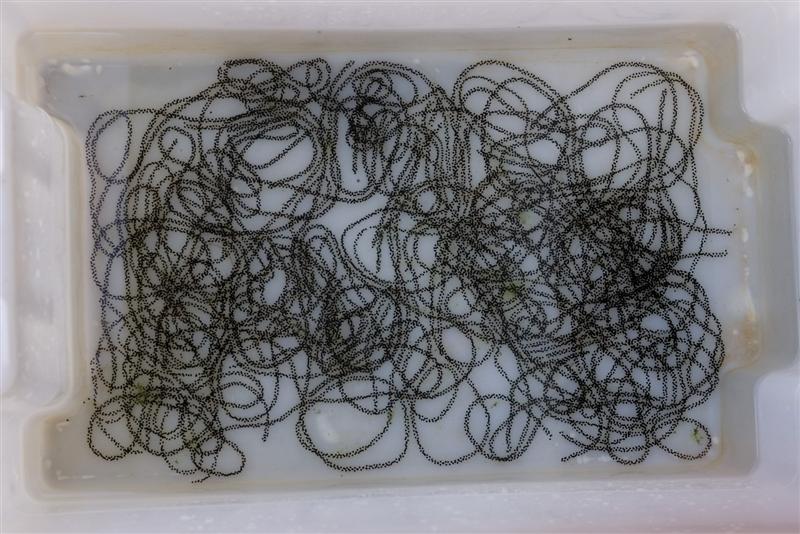
Unlike native frogs, cane toads lay their eggs in long strings, within a gelatinous matrix. Photo by David Nelson.
How can I tell if the tadpoles in my pond are toads or frogs?
Tadpoles can be very difficult to identify. The tadpoles of cane toads are smaller than those of many native frogs. Toad tadpoles are black during the day but become partly transparent at night. The body and the tail are about the same length, whereas frog tadpoles usually have tails that are at least twice as long as the body. Most toad tadpoles are less than 30 mm long (total) whereas many native frog tadpoles are much larger, and are green or brown rather than black. Toad tadpoles are black on the belly as well as the dorsal surface, whereas most native frog tadpoles have paler undersides.
Toad tadpoles often form schools, especially in warm shallow water around the edges of ponds.
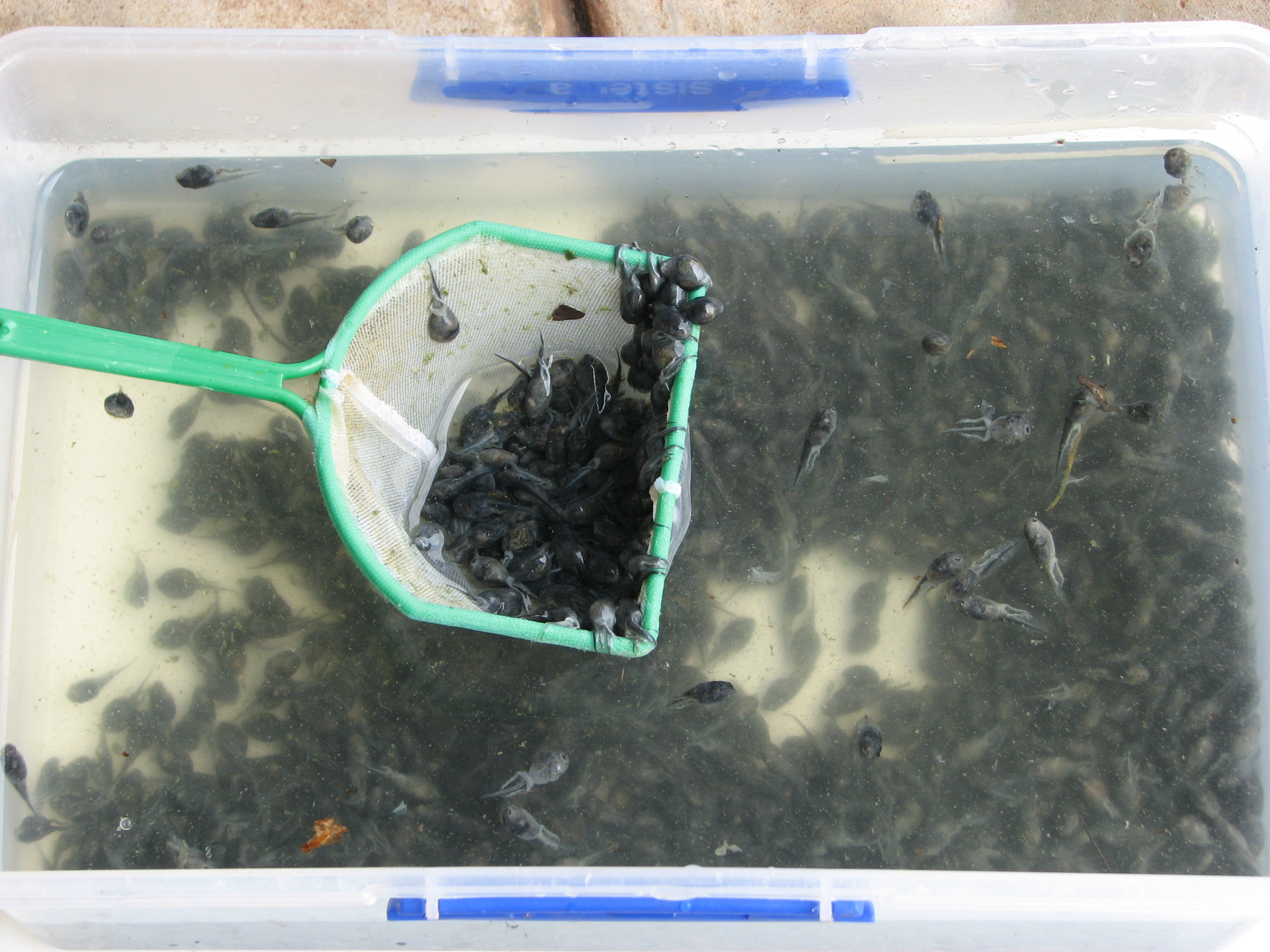
The tadpoles of cane toads are smaller and blacker in colour than the tadpoles of most native frogs. Also, toad tadpoles tend to swim around together, in schools. Photo by Michael Crossland.
How can I tell if the big amphibian in my backyard is a cane toad?
The simplest difference is size – cane toads grow much bigger than any native frogs. And if it’s a really big animal, you can clearly see the toad’s rough warty skin, big poison glands on its shoulders, bony ridges above its brows, and so forth. Cane toads have unwebbed fingers but webbed toes.
But it’s much harder to tell the difference if the toad or frog is small – less than about 2 cm long. Even professional biologists often mistake baby toads for frogs, and vice versa. In Rick's student days, soon after he got his first high-quality camera, he went on a field trip in Queensland to photograph animals – and took an entire roll of film photographing a beautiful little frog that he later discovered was a baby cane toad!
Posture is also a help. Cane toads tend to sit upright, with their heads well off the ground, whereas most (but not all) native frogs adopt a lower profile.
The call of the cane toad is also very distinctive – a long low trill, often compared to the sound of a distant motorbike.
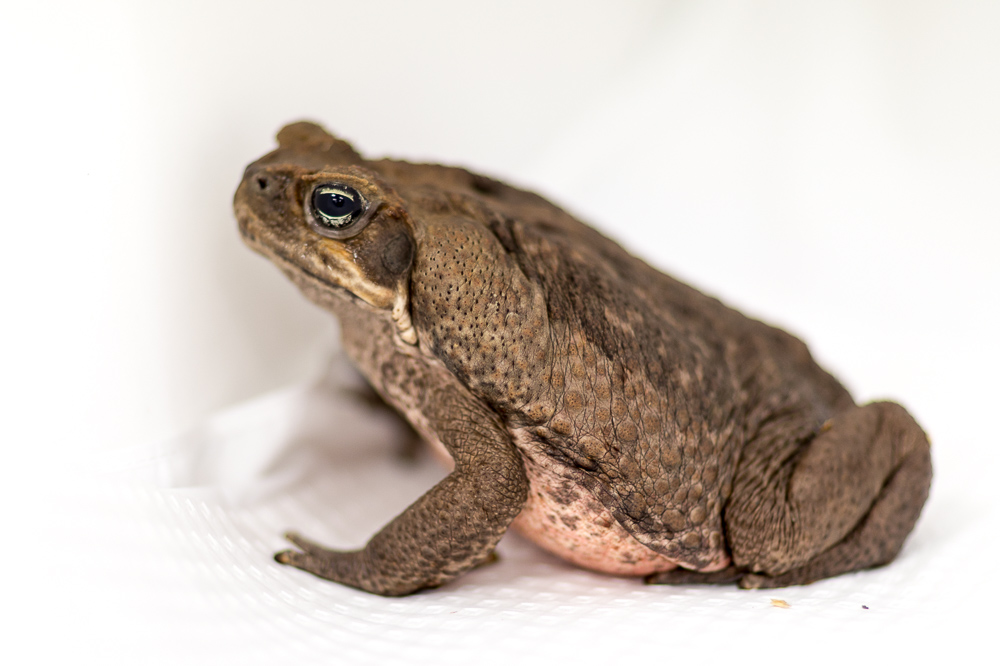
This adult female cane toad exhibits the typical upright posture of the species. In contrast, most native frogs flatten themselves to the ground.
Photo by Terri Shine.
Looking at pictures in websites like ours is a good way to check.
You can see from these photos that it can be difficult to tell the difference between cane toads and frogs
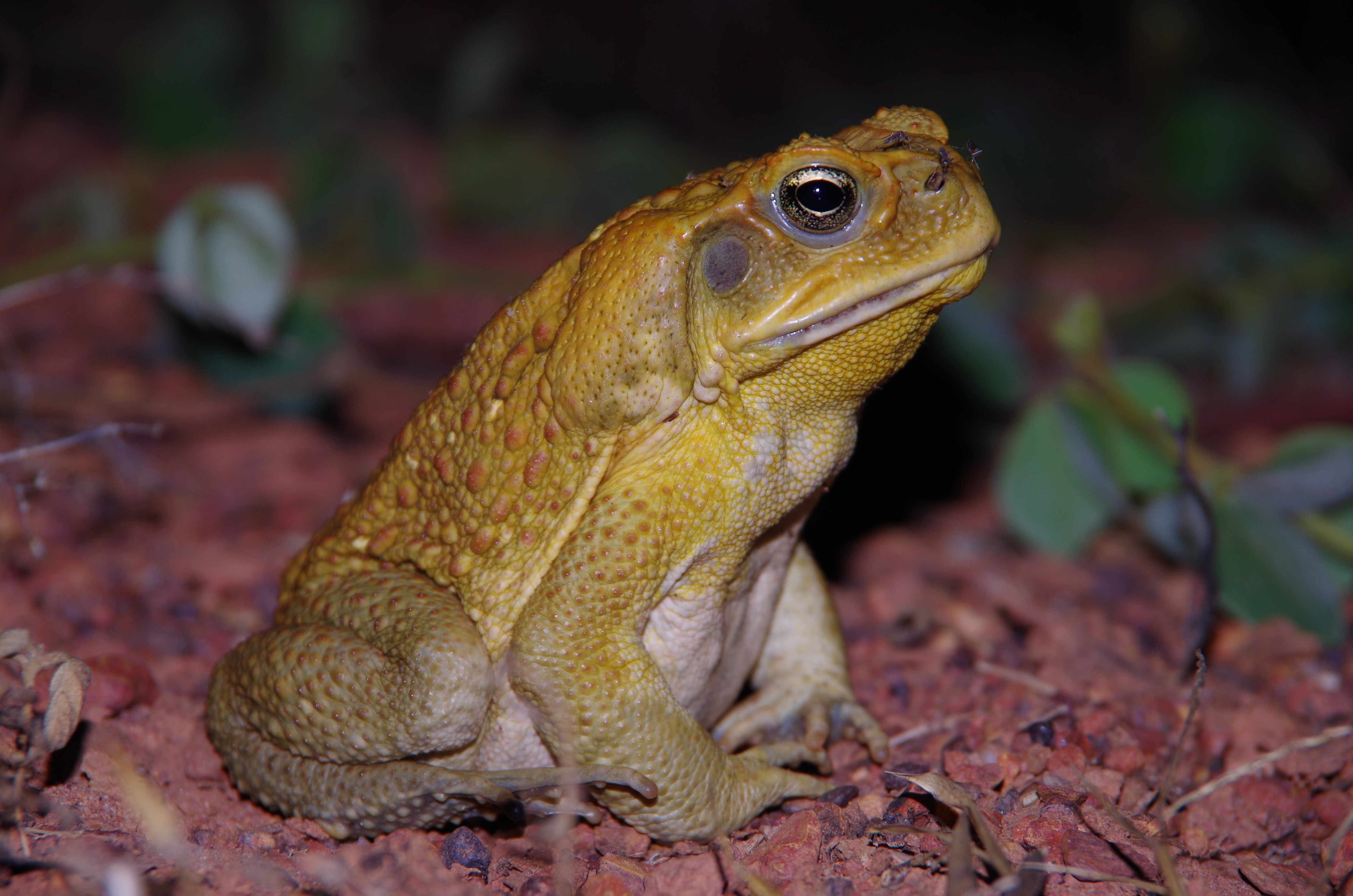
This adult male cane toad also exhibits an upright posture. Photo by Greg Brown.
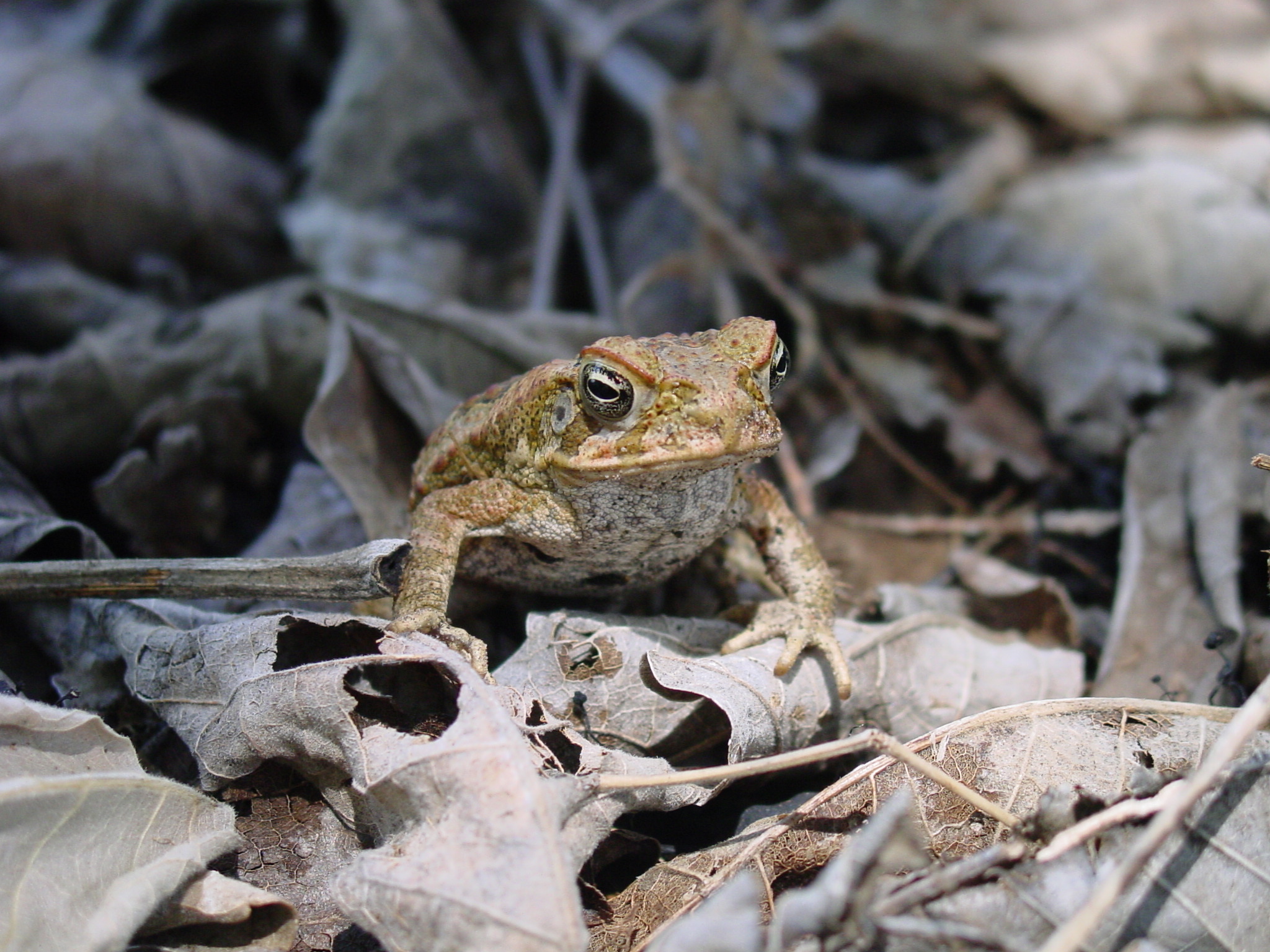
A young cane toad, looking very much like a native frog. The warty skin and bony ridge above the eye show that it is a toad.
Photo by Greg Brown.
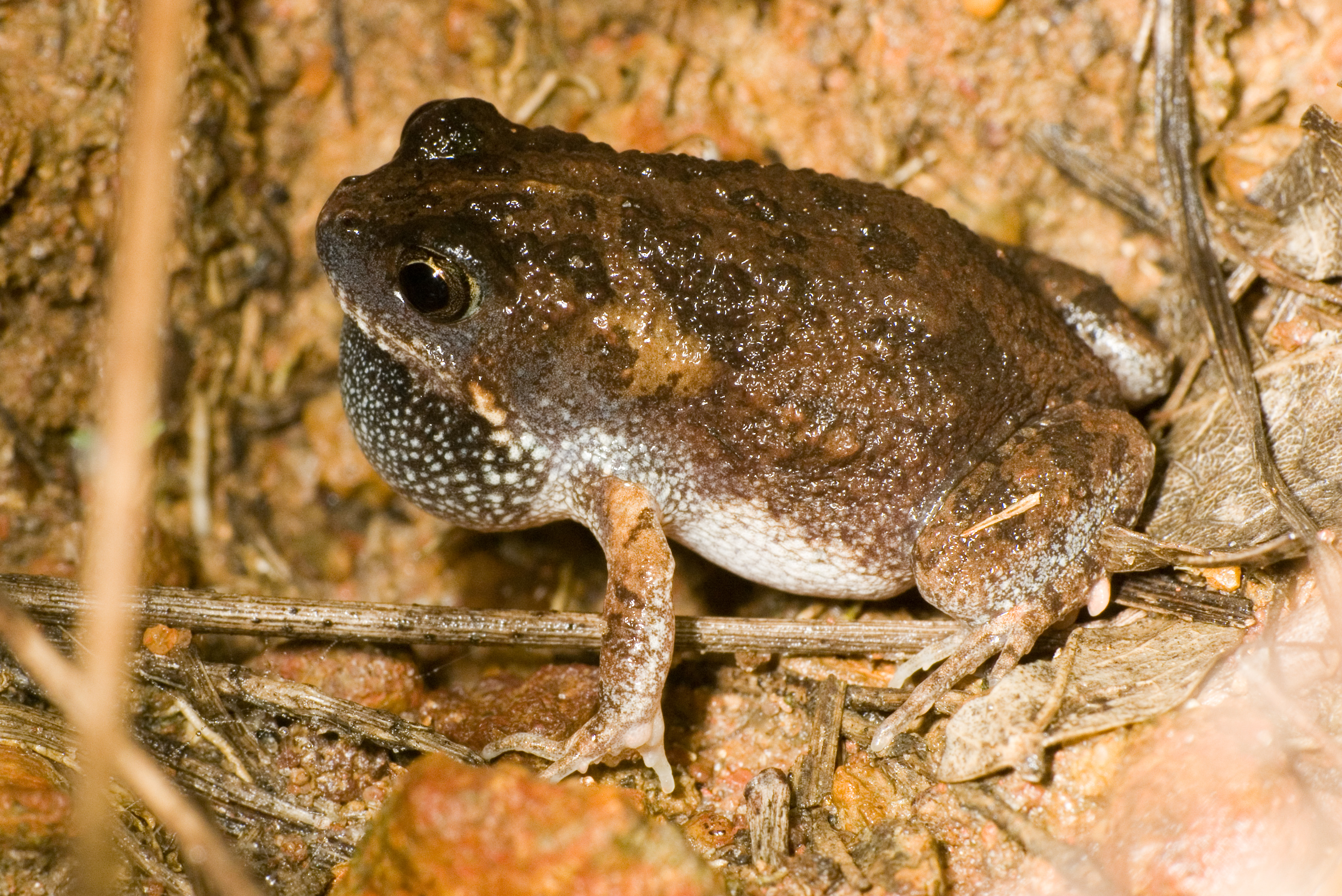
Thisis not a toad! It is a burrowing frog, Uperolia lithomoda - but very easy to mistake for a cane toad. Photo by Ruchira Somaweera.
A lot of native frogs have been killed by mistake – including endangered
species – because people have thought they were cane toads. So please – make
very sure that the animal you have found really IS a toad
before you attempt to kill it!
This sounds a bit silly - most people are sure they could tell the difference
between a cane toad and a native frog. But, sadly, they can't. Of 97 phone
calls to a community group from members of the public reporting they had found
cane toads (in response to a recent Sydney "stop the toad" campaign),
only 5 ended up involving cane toads - all the rest were actually frogs, and
one was a lizard!
TEAM BUFO took cane toads and native frogs to shopping centres around
Darwin, and we asked local people which amphibian was which. There were lots of
errors - around 30% in some cases. This suggests that it is risky to
start killing "toads" unless you are 100% confident that the animal
in front of you isn't an endangered native frog! That's especially true if you live in an area where cane toads are not usually found.
So please be sure of the animal's identity before harming or killing it!
If you are in doubt about the identity of an amphibian you have found, call
your local National Parks and Wildlife office, or the Frog Helpline
(0419-249-728) for assistance. In New South Wales, contact the Department of Primary Industry.
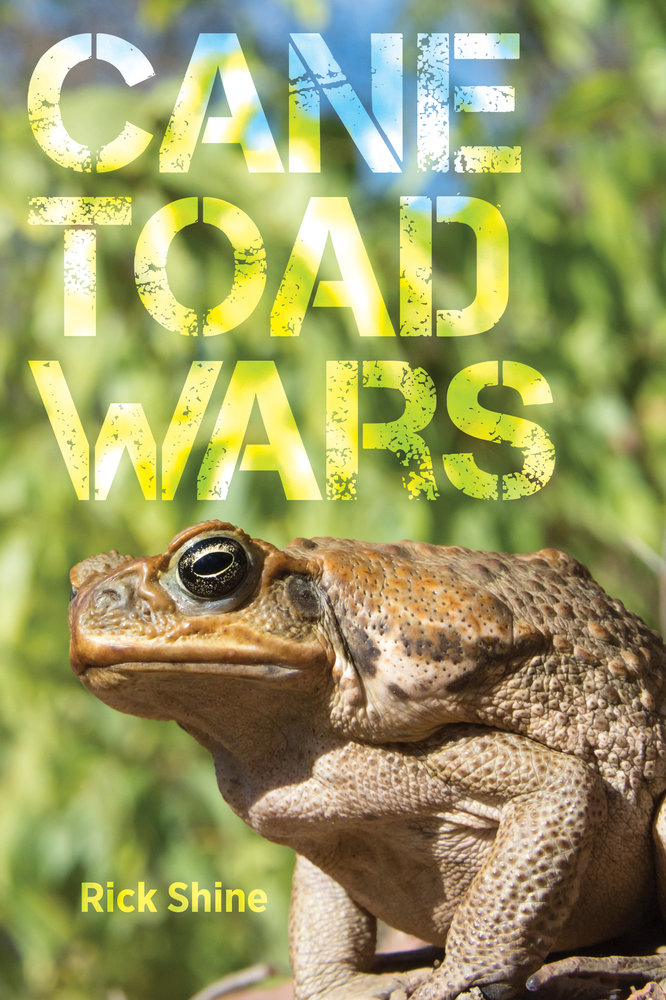
For the full story about the cane toad invasion of Australia, and what we can do about it, read Rick’s book “Cane Toad Wars” (published by University of California Press, 2018). The book is written for the general public, not for scientists, and is aimed at a wide audience. The book can be purchased through online bookstores like Amazon, or you can buy a copy through your local bookstore.
